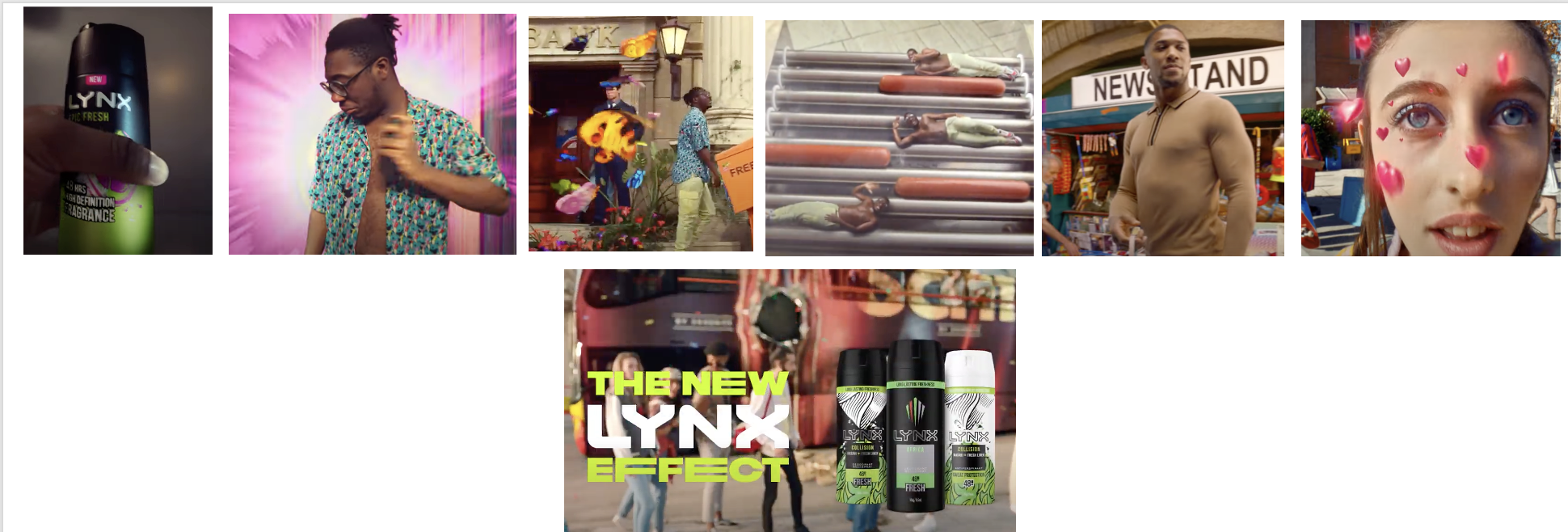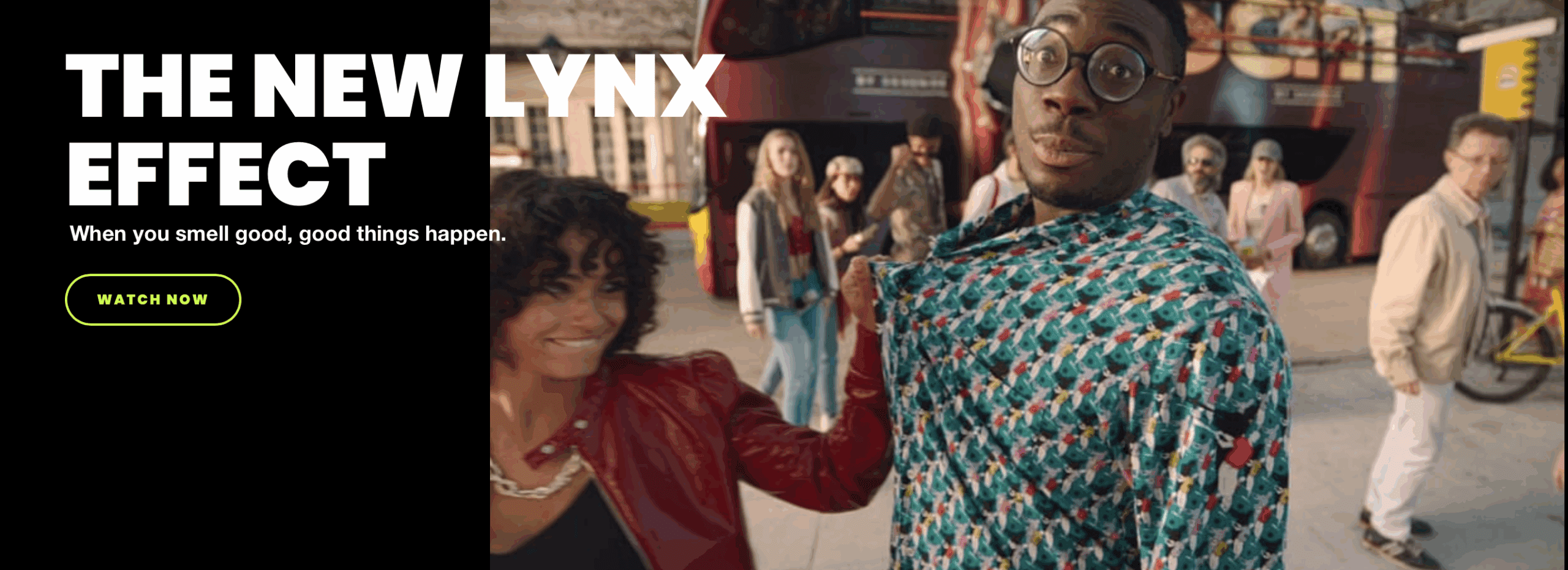Back in 2016 I posted on an attempted re-launch of the bodyspray brand Lynx (Axe in most markets), with a campaign idea called Find Your Magic. At the time, I suggested it was a mistake to ditch the distinctive asset used for many years: The Lynx Effect. I also shared concerns that the new campaign had lots of emotional ‘sizzle’ but lacked product ‘sausage’. It seems the brand team reached the same conclusions. They’ve dropped Find Your Magic. And the brand’s latest campaign is a revamped version of, you guessed it, the original brand idea: The NEW Lynx Effect.
In this post, we look at learning from Lynx losing its way with Find Your Magic but then course correcting, by remembering and refreshing what made it famous.
1. The Lynx revitalisation imperative: 2010
I first posted on the Lynx brand challenge 12 years ago, back in 2010.
The first issue I raised related to the need to re-inject aspiration into the brand:
The big challenge for Lynx is the scary way the teen male consumer has moved on. This generation want to dress in expensive Hollister or Abercrombie and Fitch gear, not Top Man. Their aspirations are much higher. And if we look forward, this is likely to continue as a trend. With this in mind, the Lynx pack now lacks style values and seems even a bit cheap.
The second issue related to the type of humour the brand had used with great success for many years, to bring to life a brand purpose defined in the 1990s as “To give guys the edge in the mating game”:
Also, I wonder if the style of humour in the Lynx brand is past its sell-by date. In the UK we call this humour “laddish”: over-the-top, sexist, women as objects etc. Another unsavoury truth could be the rise of internet porn. Young boys no longer need a Lynx ad or website to be titilated. They can find much harder stuff a click away if they want to, whereas before it was on the top shelf of the magazine rack.
2.Forgetting what made it famous: the 2016 re-positioning
Lynx did need to evolve. And six years after my original blogpost, the brand did seek to change. Lynx/Axe’s Global Rik Strubel announced what he called “the biggest re-positioning of the brand in the last 20 years”. Straight away, this set my alarm bells were ringing. Why? Because “re-positioning” is horribly hard to pull off, with few examples of success, as it involves trying to break the ‘memory structure’ associated with the brand.
Watching the campaign confirmed my fears. The brand had ‘laddered up’ to a highly emotional level, featuring a kaleidoscope of different type of guy finding their magic. We had different races and sexual orientations. We had a bloke with a big nose. And a bearded dude who liked kittens. The campaign deserved applause for diversity and inclusion. But it raised three big questions that I posted on posted on:
First, the campaign is all sizzle, no sausage. For the last 20 years Axe’s marketing has combined a product sausage, fragrances that help you feel confident, with emotional sizzle from a distinctive tone and style. The new communication is all about the physical and mental attributes Lynx users who are “finding their magic”. The brand’s “The Lynx Effect” is no longer the catalyst or hero.
Second, doesn’t the communication feel much less distinctive? We’ve lost the irreverent, laddish humour and the distinctive asset of The Lynx Effect, without creating any new distinctive brand properties that feel as powerful.
Third, the re-launch is at first sight only using “the image wrapper” of communication. The products and packaging in the end-shot look the same.
The brand needed to revitalise itself to stay relevant, but a lack of ongoing renovation over the last 10 years means that it is now attempting “too much, too late”
I also suggested that an attempt to “up-age” the Lynx user was going to hard to pull off. “We’ve been catering to teenage guys and we are now talking to his older brother, who is in university,” says Rik Strubel at time. However, This attempt to re-position Axe by targeting older user risks falling foul of what I called “the double jeopardy of re-positioning”:
First, will the older brother at university really ditch the more aspirational brands they are currently using, such as Calvin Klein, Hugo Boss or Polo Ralph Lauren? I suggest most of them won’t, given that these guys grew up with Axe and then moved on.
On the one hand, teen boys who liked the irreverent humour of The Lynx Effect marketing may be lukewarm about the new positioning. This risks turning off or even alienating your original core target.
Aiming as high up the age spectrum as possible is a smart move to maximise potential, but needs ideally doing when you launch a brand.

3. Finally, fresh consistency: the 2021/22 revitalisation
Fast forward to today, and we now have The New Lynx Effect. The whole idea of brand revitalisation is captured in this campaign idea. The brand is remembering what made it famous by using The Lynx Effect. But updating it to be new and relevant for today. Brand revitalisation is hard. But it tends to have a better chance of success then re-positioning because you are refreshing existing memory structure rather than trying to break it.
It seems the brand finally found the right balance of freshness and consistency.
First, the brand’s sense of purpose is now firmly rooted back on the brand’s original functional foundation of smelling great:
When you smell irresistible, anything can happen. You’re a little more confident and life opens up a world of possibilities. We believe that attraction is for everyone and between anyone. It doesn’t matter your race, your sexuality or your pronouns. If you’re into it and they’re into it, we’re into it. That’s The New Lynx Effect.
We can also see how fresh consistency is used in the communication campaign (below) using our ‘KULA’ framework:
KEEP: Smelling good as the key to feeling confident, with the product playing a heroic role, right from the first frame. Also, a simple story of one guy, rather than the fast-cutting, multiple vignettes if Find Your Magic
UPDATE: we are back to ‘a regular guy feeling extraordinary’, as used in the Lynx ads of old. But we have a contemporary, colourful portrayal of his journey
ADD: we do see conventional versions of the Lynx effect, with a young lady impressed by the Lynx fragrance. But we also have other fun portrayals of the Lynx effect, including colourful butterflies to signify the fragrance, happy hot dogs in the form of the main character and a cameo from champion boxer Anthony Joshua
LOSE: we have lost the outdated sexist humour of the 2000s

Lnyx/Axe was often held up as an example of a product brand being out of sync with the corporate brand, in this case Unilever. “How can Unilever have Dove on the one hand, campaigning for ‘real beauty’ and Lynx/Axe on the other portraying women in such a negative way?” people asked. Hats off to the Lynx team for being open about how it plans to keep the good bits of its past but change to update itself, as shown on their website:
We’re a brand that’s all about attraction. We always have been, and that will never change. But as times have changed, so have we.
And so as our guys’ definition of masculinity has expanded and changed, so have we as a brand. We know that we didn’t always get it right in the past, but we are trying to move on from that.
It’s pretty simple really: We believe in inclusivity, mutuality and progress. When it comes to attraction, and everything else. And whilst we’re up for a laugh on most stuff, this is something we definitely take seriously.
In conclusion, the Lynx story show the perils of trying to re-position your brand and in doing so forgetting what made you famous. The latest chapter in the story shows Lynx re-connecting with its roots whilst refreshing itself to stay relevant for today. 12 years after the brandgym blog post recommending this approach but, hey, better late than never!
